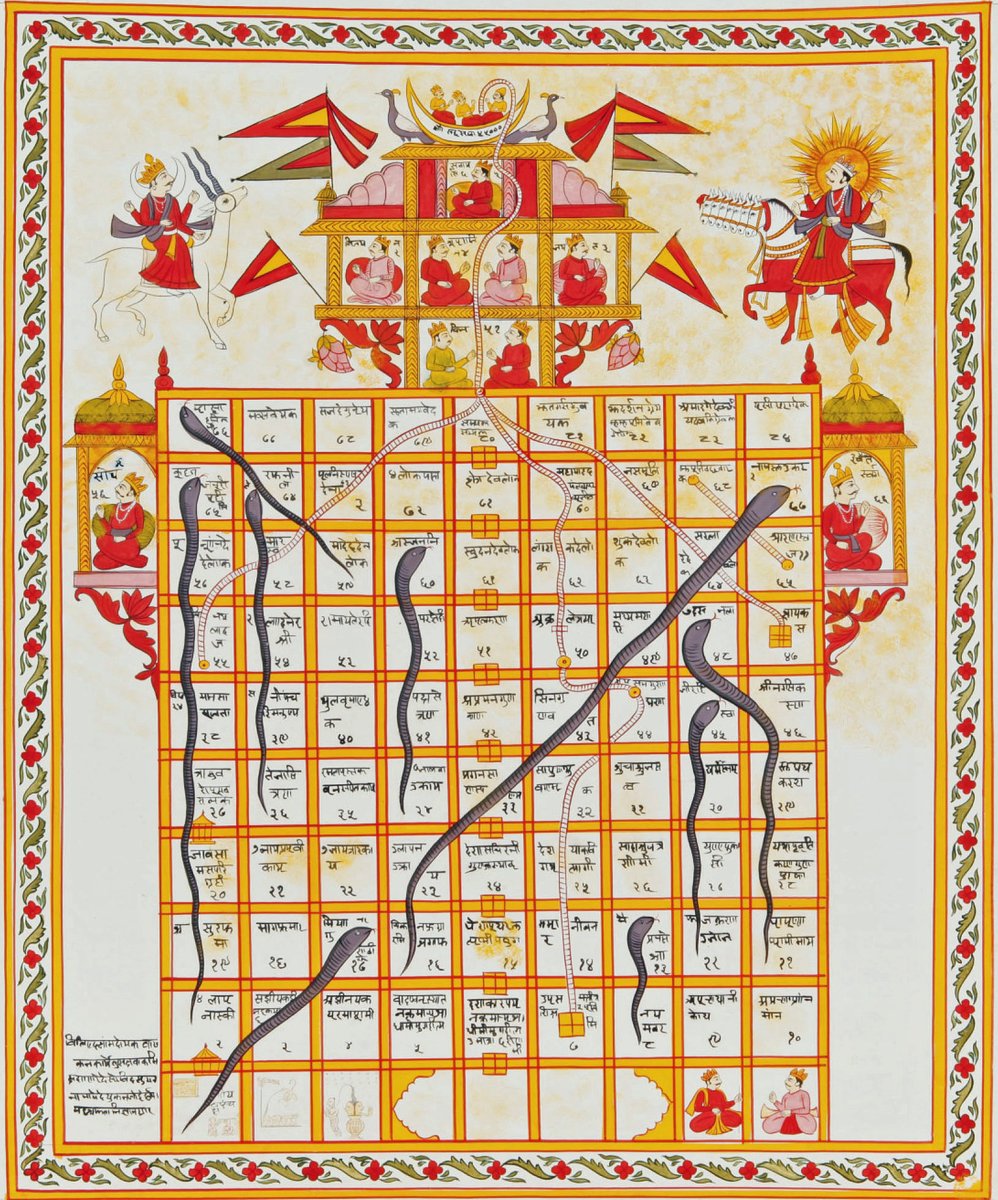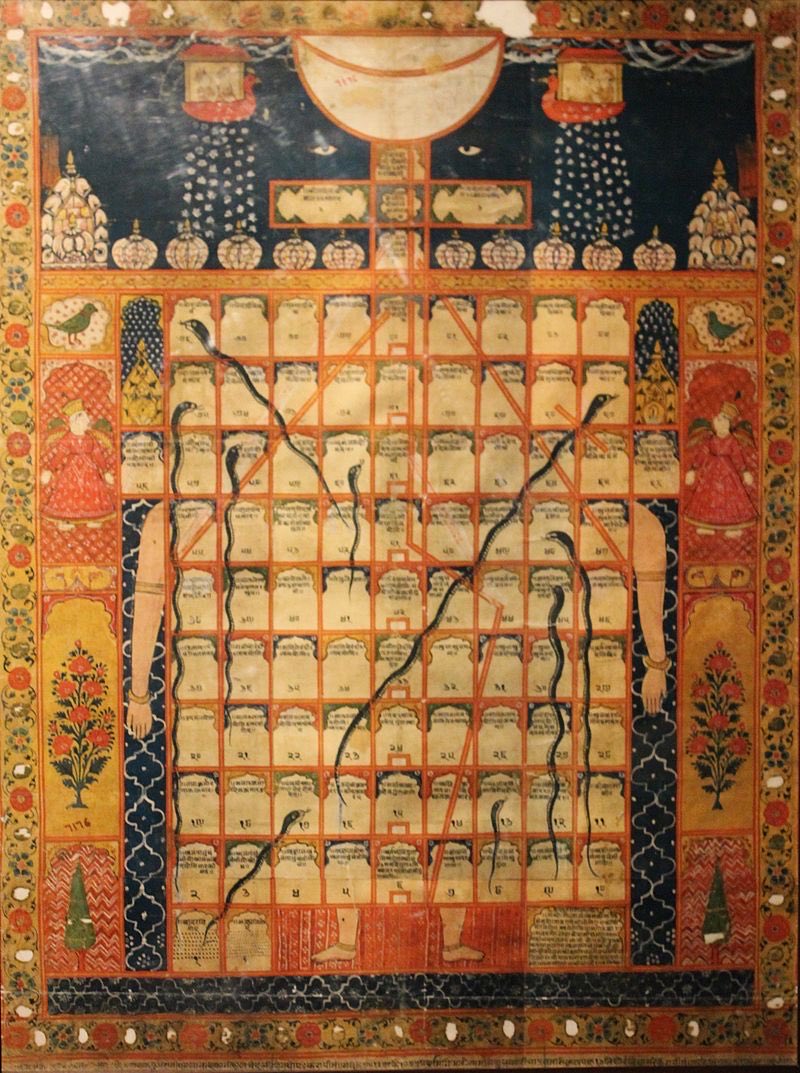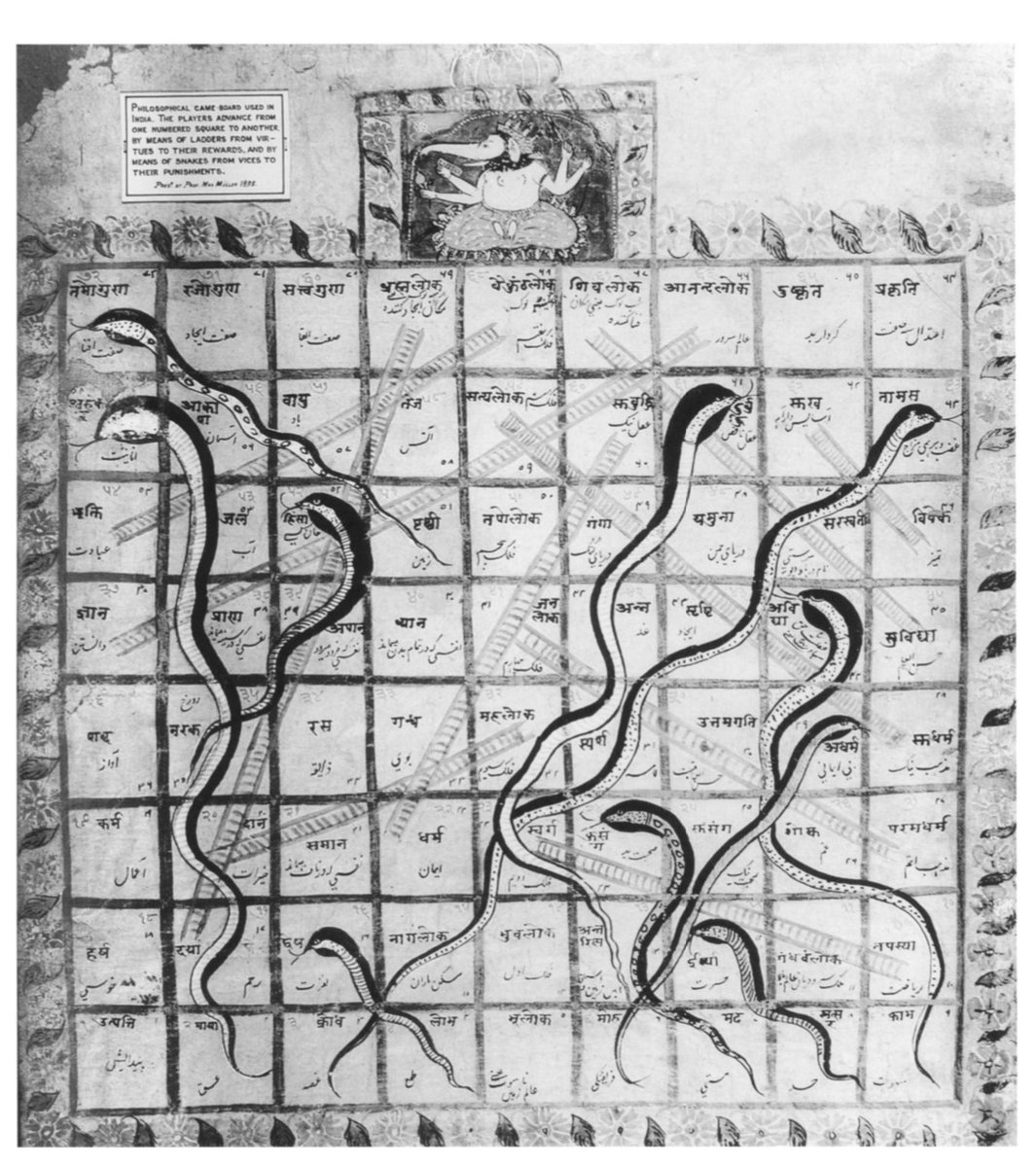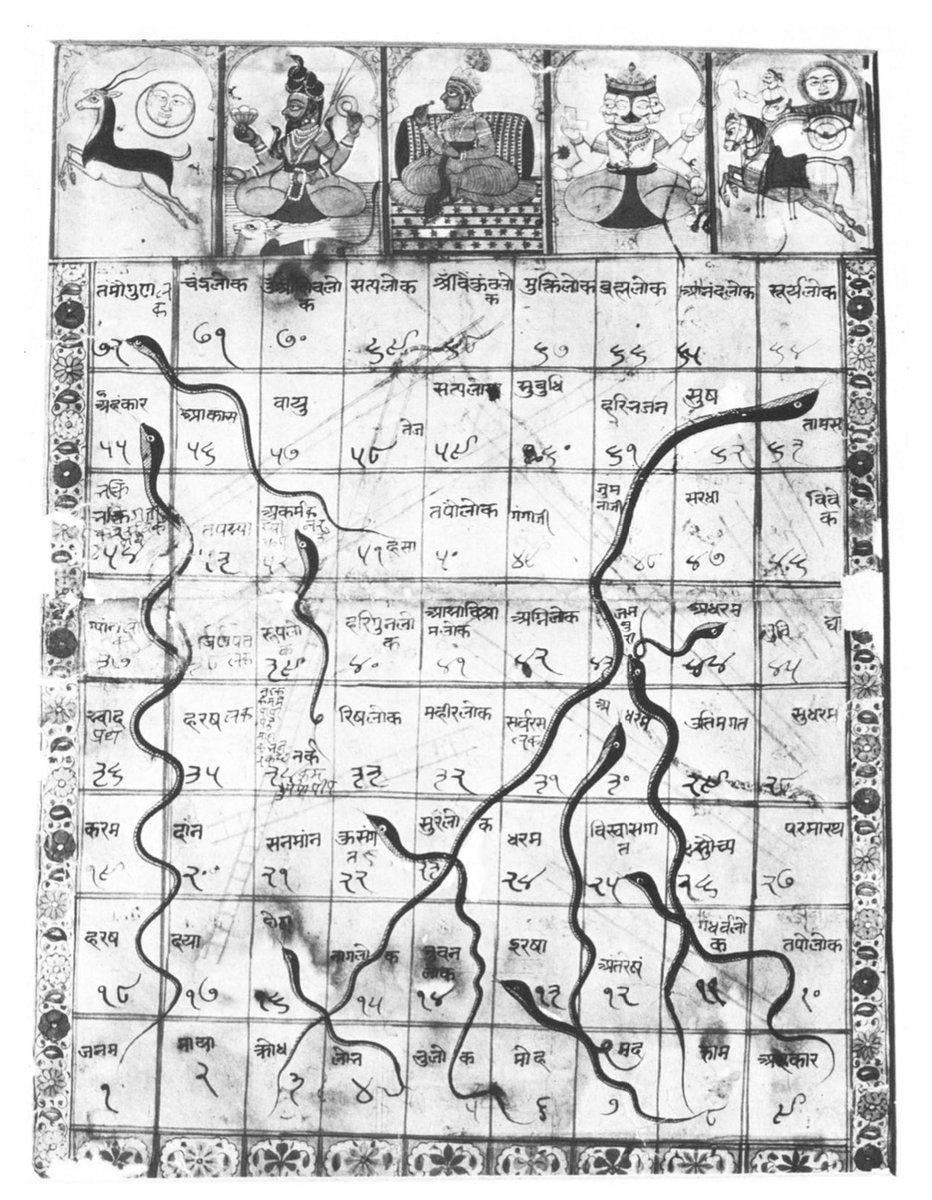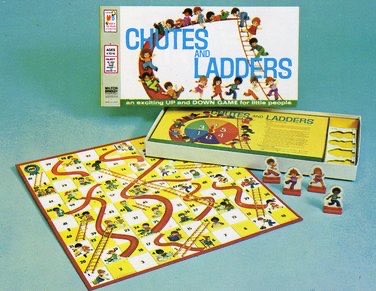A reminder that Chutes and Ladders is really just Snakes and Ladders, an ancient Indian board game going back to at least 200 BCE.
Adding some more original snakes and ladders boards:
Gyan Chaupar (Jain version of the game), National Museum, New Delhi.
Gyan Chaupar (Jain version of the game), National Museum, New Delhi.
So outside the U.S. it& #39;s mostly still Snakes and Ladders (in the U.S. it& #39;s Chutes and Ladders). But there have been many variations. This German version of Lieterspiel does away with snakes entirely in lieu of circus elements.
WHOA.
So get this:
Gyan Chaupar (the game of knowledge? someone check me on this meaning) looks like the image here. Ancient. Many variants, but most have one thing in common: they are games where you go through "life" and gain knowledge/wisdom.
So get this:
Gyan Chaupar (the game of knowledge? someone check me on this meaning) looks like the image here. Ancient. Many variants, but most have one thing in common: they are games where you go through "life" and gain knowledge/wisdom.
Western versions of the game tend to have a very checker board look in the 19th century, like the German version I mentioned above (shown again here)
But go back a century or so and Milton Bradley is releasing THIS: The Checkered Game of Life
And much like Gyan Chaupar, you go through life starting with nothing and slowly make gains. Like Gyan Chaupar it has a strong moral message. Like Gyan Chaupar you ascend a grid.
And much like Gyan Chaupar, you go through life starting with nothing and slowly make gains. Like Gyan Chaupar it has a strong moral message. Like Gyan Chaupar you ascend a grid.
So I think there is a case to be made that not just Chutes and Ladders but also MB& #39;s Game of Life both come from Gyan Chaupar, the ancient Indian Snakes and Ladders.

 Read on Twitter
Read on Twitter